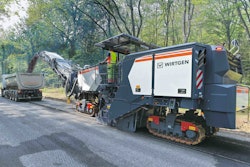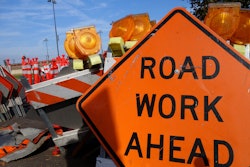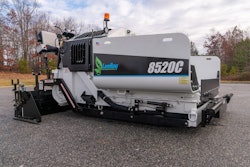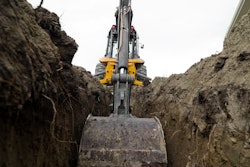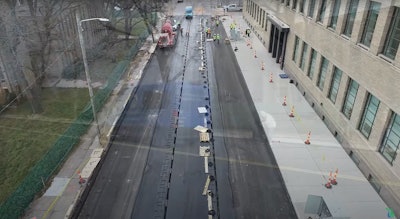
Michigan claims it has won the race to build the first wireless electric-vehicle-charging public road in the U.S.
On a quarter-mile strip of 14th Street in Detroit, the Michigan DOT and Israel-based charging technology company Electreon demonstrated an electric Ford Transit van being charged as it moved along the asphalt corridor.
Before the road was paved, Electreon’s inductive charging coils were installed. The copper coils, later covered by asphalt, transfer electricity wirelessly through a magnetic field. The energy then transfers to batteries via a special Electreon receiver installed under the vehicle. The charging can occur while the vehicle is stopped or moving over the road. The electricity is provided to the coils by control units, similar to electrical boxes, placed inconspicuously on the roadside or underground.
The company says the coils are only activated when a vehicle with the receiver passes over them. It says the road is safe for drivers, pedestrians and wildlife. Vehicles have been tested at speeds of up to 50 mph, but the system can support higher speeds, according to Electreon.
The company says the inductive coils do not affect the road’s durability.
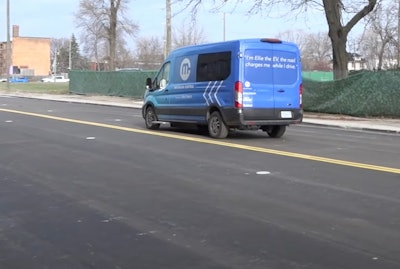 An electric Ford Transit van is wirelessly charged as it drives on the EV-charging section of 14th Street in Detroit.Michigan DOT
An electric Ford Transit van is wirelessly charged as it drives on the EV-charging section of 14th Street in Detroit.Michigan DOT
Electreon and MDOT will work with partners, including Ford’s Michigan Central innovation hub, to further experiment with the road to “demonstrate how wireless charging unlocks widespread EV adoption, addressing limited range, grid limitations, and battery size and costs,” Tongur adds.
MDOT says its next step will be to seek bids later this year for a project to rebuild part of Michigan Avenue, where inductive charging will be installed.
The Race for EV Charging Roads
The race to build EV charging roads heated up in 2021 when MDOT and the Indiana Department of Transportation announced plans to build roads that would wirelessly charge battery-powered vehicles.
Indiana DOT is currently working on a project with Purdue University and Magment, a German company that has developed magnetized concrete, to build the first section of wireless-charging concrete public highway.
Magment’s magnetizable concrete is a mixture of cement and recycled magnetic particles called ferrite, which can come from electronic-waste recyclers, according to the company. It says its “proprietary blend of concrete and magnetic particles is easy to integrate into existing concrete processes.”
Ferrite is a ceramic material made by mixing iron-oxide with metals, such as nickel, zinc, manganese, barium and/or strontium. It is used in electronic inductors, transformers and electromagnets.
A coil assembly is also integrated into the concrete to transfer electric power to moving vehicles above. The company says the coil assemblies can withstand heavy loads.
According to Purdue University, a quarter-mile test bed is being built on U.S. Highway 231/U.S. Highway 52 in West Lafayette that would provide power to heavy-duty trucks. Plans would be to add a wireless charging section to an interstate highway within five years.



